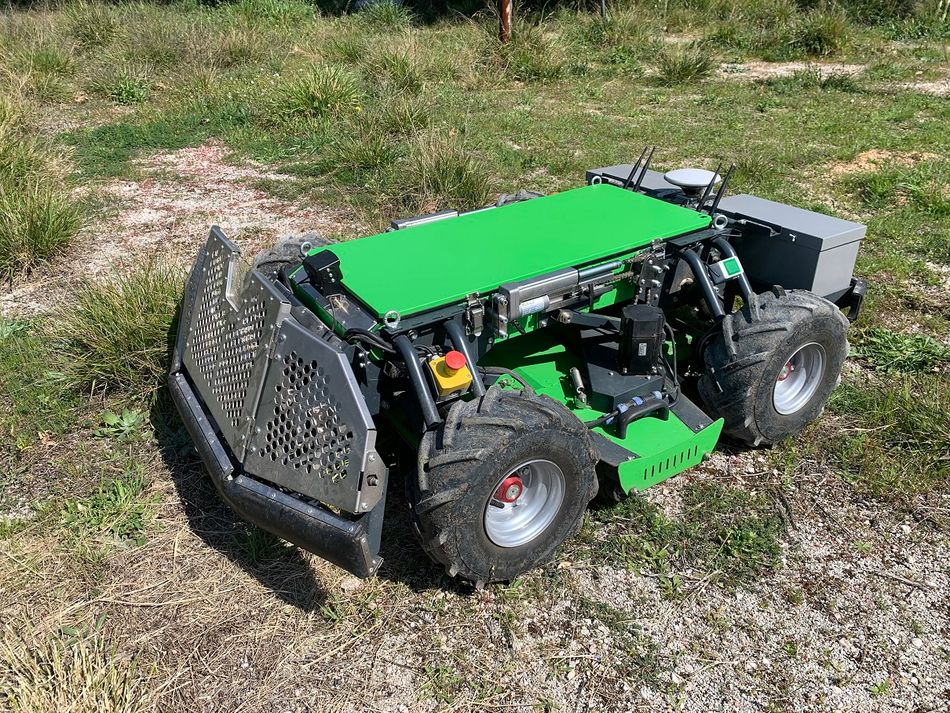Centimeter-accurate Xsens MTi-680G pilots autonomous mower around large solar panel installations
A sun-drenched Mediterranean country, Greece is an ideal site for climate-friendly solar energy generation. Heavy private sector investment in solar power backed by government incentives mean that today, Greece ranks fifth in the world for installed photovoltaic capacity per capita. By 2022, large Greek solar farms provided more than 4GW of generation capacity.
But the abundant sunlight that makes solar power so attractive in Greece has an unwanted side-effect for the operators of solar farms: it makes the grass and other vegetation around and under the panels grow fast. Left unchecked, grass growth can shade the panels, and restrict the access of maintenance staff.
Traditionally, facilities maintenance contractors would cut the grass three or four times a year. But this is an expensive service that requires careful management: a solar farm contains crucial equipment such as cabling that is easily damaged by a manually operated mower.
Automation is a far better approach: cheaper and more reliable, autonomous mowing can be safely performed day and night, so that the robot mower can be kept continually in use.
While many products today serve the agricultural robot market, the particular requirements of solar farms call for a special solution. This is what Athens-based technology manufacturer iKnowHow developed for Enel Green Power®, the world's largest private renewable energy operator with a total capacity of more than 59 GW and a generation mix that includes wind, solar, geothermal, and hydroelectric power, as well as energy storage facilities. Enel Green Power is at the forefront of integrating innovative technologies into renewable energy plants
And iKnowHow’s robotic mower, called Aristos, relies on an Xsens MTi-680G RTK GNSS/INS sensor module from Movella to keep it on track, even when the satellite positioning signal is temporarily unavailable.

The Aristos robot mower, showing the RTK-capable GNSS antenna at the rear. The Xsens MTi-680G sensor is mounted underneath the upper green panel.
Keeping strictly to the path
Enel’s requirement for the Aristos autonomous mobile robot included a maximum size and weight: the mower needs to be low enough to cut underneath solar panels as well as between them, and light enough to be transported from one site to another by small van. It also needed to be 100% autonomous, both for mowing and charging its battery.
The cutting deck is a standard mower blade configuration. The principal challenge for the robot designers was in localization, navigation and object avoidance. Aristos follows a pre-set route, mapped out by the solar farm operator, to minimize operating time and battery power consumption. The robot’s systems have to locate and orientate the mower so that it follows its route accurately, and so avoids contact with the panels or the solar farm’s infrastructure.
Apart from the mower itself, the iKnowHow system’s other main element is a static charging station at each solar farm: this houses a battery charger and an RTK transmitter beacon for the robot’s enhanced GNSS satellite positioning system.
With a clear GNSS signal and receiving RTK corrections, Aristos can navigate its route to within ±5cm accuracy. When cutting underneath the panels, however, multipath effects degrade the satellite signal, so it relies on a combination of wheel odometry and magnetic heading signals to maintain accurate positioning until satellite reception is recovered.

The Aristos robot mower operates as well under solar panels as between them
All-in-one sensor provides combined positioning signal
At the heart of this autonomous navigation system is the Xsens MTi-680G all-in-one positioning and motion sensor from Movella. Michalis Logothetis, Lead Robotics Engineer at iKnowHow, says that it chose this sensor because it combined high performance, robust construction and easy integration. The MTi-680G integrated GNSS/IMU solution includes an RTK-capable GNSS receiver alongside its 3D accelerometer, 3D gyroscope and magnetometer, all in one 56.5 × 40.9 × 36.75mm package.
Michalis Logothetis says: ‘The Xsens sensor fusion firmware combines and synchronizes all these signals, producing easy-to-use digital position, attitude and heading outputs that keep Aristos on track under the panels as well as in the open air.’
Autonomous operation of the mower is not just about maintaining an accurate absolute position at all times. Aristos works in a dynamic environment in which unmapped, random obstacles such as a or equipment left behind by maintenance technicians can obstruct its path. The MTi-680G helps the robot deal with obstacles that could upset its progress. The sensor continually measures pan/tilt as well as heading: Aristos stops automatically when tilt exceeds a safety threshold and reports back via 4G to its control center. An onboard RGB camera enables a remote operator to monitor the scene when an alert is raised.
The rugged MTi-680G is well suited to use in these dynamic outdoor conditions. It is housed in an IP68-rated aluminium enclosure, and handles the shock and vibration inherent in mowing operations on rough ground.
Michalis Logothetis comments that the MTi-680G quickly proved its value in a prototype design reviewed enthusiastically by Enel. He says: ‘We are delighted with the operation of the Xsens MTi sensor. Aristos passed its field trials with flying colors, and after iKnowHow started production in 2023, it is now supplying units to Enel for use on solar farms all around the world.’
